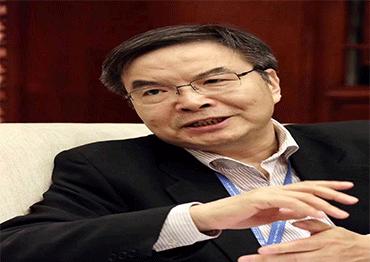n September 2023, Apple took a major step toward global supply chain diversification, releasing iPhone 15 units manufactured in India alongside those made in China.
The move was a break from precedent, where only older iPhone generations were assembled in India, with new devices produced there six to nine months after their initial release.
Notably, Apple’s capacity in Vietnam has also expanded, with JP Morgan analysts predicting that by 2025, India will produce 25 percent of all iPhones while Vietnam will manufacture 20 percent of all iPads and Apple Watches. In line with Apple’s strategy, major contractors like Foxconn, Wistron, Pegatron and Luxshare are investing heavily in both countries to boost production capacity.
Apple is not alone in seeking diversification beyond China. Since the trade war initiated by former US president Donald Trump in 2018, many international brands like Samsung, Sony and Dell have increased investment in Southeast Asia. These emerging markets offer advantages with lower labor costs, preferential taxation and reduced geopolitical risks. Additionally, developed economies like the US, Japan and Europe are encouraging manufacturing re-shoring, nearshoring and friendshoring.
Chinese manufacturers are starting to relocate parts of their production processes overseas. Between September 10-12, four listed Chinese companies in industries like photovoltaics, electronics and appliances announced plans to invest in factories in Vietnam, citing cost reduction, mitigating the influence of geopolitics on international trade and expanding their global presence. Vietnam, India and Thailand are popular investment destinations, with South America and Europe also attracting attention.
The relocation of production capacity, whether by American, European, Japanese or Chinese companies, mirrors trends that began in the 1960s when emerging markets established assembly lines for multinationals from developed countries.
Despite the reduced reliance on China, the country’s well-developed production capacity, supported by a large pool of skilled technicians and continuous technological advancements, suggests it is unlikely to be marginalized in the global supply chain, according to Zhao Zhongxiu, president of the University of International Business and Economics and an expert in international trade and industrial economy.
In an interview with NewsChina, Zhao emphasized that China must strive to maintain a strong position in the supply chain through continued openness and technological progress. This approach is crucial to prevent China from getting caught in the middle and ensuring its sustained relevance in the evolving global landscape.
NewsChina: Do these relocations threaten China’s position in the global supply chain or shut it out entirely?
Zhao Zhongxiu: If your advantages in some aspects are gone and you are incapable of upgrading and rely too much on foreign capital, you will lose business. But China’s strength lies in replacing the previous foreign-led industrial chain and it can now export its own [production] overseas.
Chinese production has been upgrading. Previously, processing trade accounted for over 50 percent of overall foreign trade. It has since dwindled to around 20 percent. This means more parts and components are produced in China. The country’s ability to absorb technology and continually upgrade is exemplified in [the quick adaptation capability of] Huaqiangbei in Shenzhen [the world’s biggest electronic market, also called “China’s Silicon Valley”]. Notably, China’s electric vehicle industry has rapidly caught up with developed countries, showcasing its agility in development.
Given its robust manufacturing capability and system, kicking China out of the global core value chain is impossible. Moreover, China is becoming more open and establishing stronger connections with the rest of the world. It is making efforts against decoupling and aiming for deeper integration with the world.
Yet the process is not without its challenges. For example, some companies relocated to Vietnam only to return after finding it lacked supporting industries or after failing to fulfill orders. It takes time for businesses to find the most suitable locations.
Meanwhile, we need to keep in mind that China cannot take the entire market. Despite its manufacturing strength, China does not produce the majority of the world’s goods. The relocation of certain capacities is not a significant concern, as long as it will not result in excessive reliance on imports.
NC: What challenges will supply chain relocation bring to China?
ZZ: China is stuck in an awkward situation where it faces competition from countries with cost advantages for producing lower-end products and constraints on developing high-end products due to restrictions on technology due to current geopolitical tensions. This may hamper China’s upgrading and potentially lead to the middle-income trap.
But this may also motivate China to accelerate progress to overcome the tech blockade. As we all know, the Chinese government can mobilize and allocate necessary resources to enhance technology development and achieve breakthroughs of core technologies. It’s doing this now. At the very least, China has substitutions for most core technologies. Despite lagging efficiency, it can improve over time. Now that the global distribution and cooperation system has been disrupted, China is forced to make significant efforts in developing substitutes for self-reliance while simultaneously strengthening international cooperation. China is cornered, but an opportunity might come from it.
China’s past dependence on the global distribution system led to oversight of many critical issues. For instance, China only recognized the urgency of producing its own microchips when faced with export restrictions from other countries. It’s the same with large aircraft. In the past, it was easier and cheaper to buy than manufacture, so there was no urgency to make technological breakthroughs.
Of course, using trade as a weapon to curb Chinese development only works in the short term. The US will be harmed too in the long run. China is the biggest semiconductor market. The US cannot really interrupt China’s long-term development. Meanwhile, China is making efforts to closely link with the world. I don’t think China can be completely isolated in this manner.
NC: Is self-dependent innovation the solution?
ZZ: Since the reform and opening-up policy, the inflow of foreign investment has significantly boosted China’s development and upgrading. However, we cannot overly rely on foreign investment as the sole lifeline for progress. Fortunately, China has been actively introducing and absorbing advanced science and technology, which serves as a foundation for further innovation. If further innovation were to be ignored, foreign investment would lead China by the nose.
China lacks a self-dependent production ecology that can drive technological upgrading. While some regions focus on improving their business environments, they might not prioritize developing technology and lack strong local manufacturing. But I think Shenzhen has done well in transforming into a sci-tech oriented growth model and has many high-tech companies.
NC: How can Chinese companies secure and strengthen their positions in the supply chain on the international market?
ZZ: As a big country, China still holds the initiative in its development. The ongoing trade conflicts and technology wars have forced China to abandon the illusion [of depending on others]. That’s a good thing. Otherwise, China might have continued to use the most advanced products from other countries without producing them domestically. Under these circumstances, China needs to accelerate the pace of upgrading and foster innovation to maintain and strengthen its position in the supply chain. We hope to safeguard the stability of the global supply chain and utilize our vast domestic market to counter the anti-globalization movement. After all, the potential of a domestic market of 1.4 billion people should not be underestimated.
On the other hand, China has been successful in exporting readily applicable technologies and organizing production overseas. China boasts a complete production system. It’s also exporting technologies in key areas like high-speed rail. In these challenging times, Chinese companies need to be more ambitious and strive to prove themselves in the international market.
In fact, more and more Chinese companies are expanding globally, first by engaging in manufacturing and now taking steps to organize the production chain [rather than join existing ones] to increasingly integrate with the world. Chinese companies are also pushed into a corner, so they feel the urgency to expand and play a more important role.
Currently, there is a lot of discussion about chain leader enterprises. These enterprises have control over the production ecology and bring together suppliers within their chain. They serve as a node with extensive reach and exert strong control over the chain, organizing production and technology collaboration. Apple, for example, controls a supply chain with its intellectual property, not investment. Companies like Huawei and some new energy companies are examples of such chain leader enterprises that have primary and secondary suppliers. Given the backdrop of production relocation, I hope more and more Chinese companies can go global and become leader companies.
NC: How will the global value chain evolve and what will China’s position be in it?
ZZ: The global value chain consists of three sub-chains or interrelated production hubs: one in North America, another in Asia and a third in Europe, centered around the US, China and Germany. In the past, these hubs were interconnected, forming a comprehensive network. Now they are increasingly regionalized. Competition between China and the US in technology makes it hard for China to upgrade, but it is a necessary step China must take. The US is attempting to build a global system that excludes China based on its own values, which I believe will not be fully realized unless there is a large-scale military conflict, which would push the whole thing out of control.
I’m cautiously optimistic about the future. In the end, the US might realize that conflict with China does itself no good. It also depends how long the US’s domestic manufacturing system could sustain itself [if it chooses to decouple with China]. We may see the result in five to 10 years. In the meantime, China needs to push forward and speed up efforts to strengthen its weak links to secure a higher and more influential position in the global value chain.

 Old Version
Old Version




